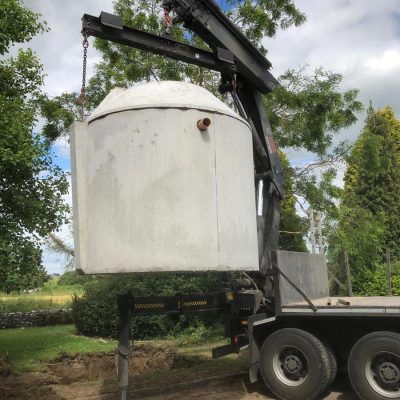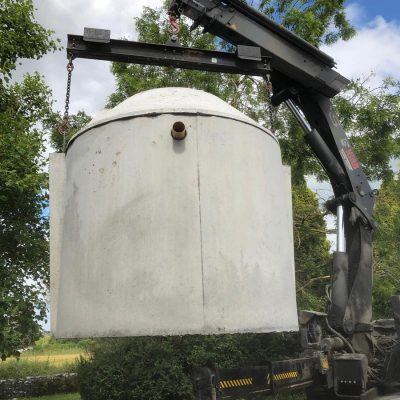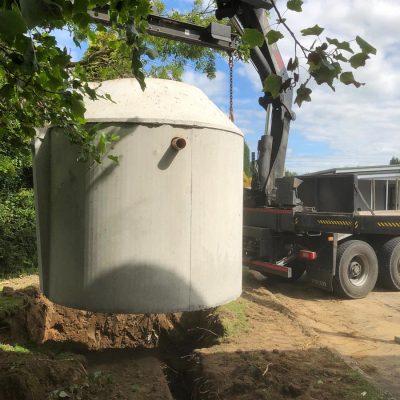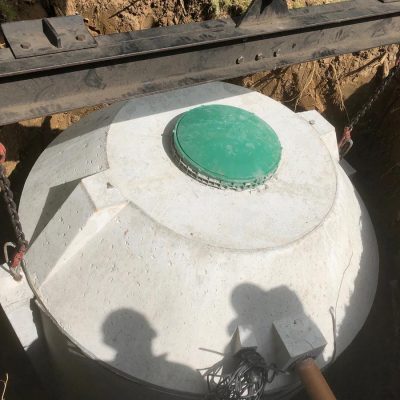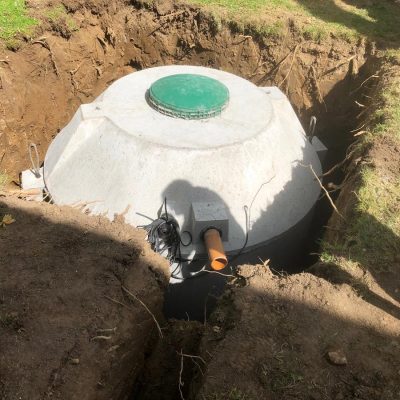Rainwater harvesting Systems
Rainwater is clean!
52% of ground water samples taken in Ireland are contaminated with faecal contamination, with 30% showing gross contamination. Rainwater is free of coliform bacteria and free of such chemicals as iron and lime.
Rainwater is free!
Higher energy prices will lead to higher costs of treating drinking and waste water. Energy efficiency is now the order of the day and therefore rainwater harvesting makes economic sense and is kind to the environment.
Benefits of Using Rainwater
More efficient washing – saving up to 50% on detergents
Soft rainwater prolongs the life of washing machines
No lime scale /salt build up in toilets and urinals
There is no better water for plant irrigation.
Soft water in toilets allows better treatment of effluent in KPC Biofilter system.
How it Works


Step 1
The Auckland Rainwater Harvesting System is a top of the range rainwater recovery system designed to be installed underground. It is designed to harvest clean rainwater for use in the home and the garden e.g. supplying washing machines, toilets and garden sprinklers.
The Auckland System initially treats the rainwater from the roof with a high specification vortex filter. This filter removes all significant solids suspended in the rainwater before it enters the underground storage tank.
Step 2
On entering the tank the filtered rainwater is passed through a stainless steel diffuser located at the bottom of the inlet pipe. This calms the ingression of rainwater into the tank, avoiding disturbing fine silt that may have built up on the bottom of the tank.
Step 3
Suspended from a ball float, a fine mesh filter is connected by a flexible hose to the stainless steel booster pump. This filter arrangement means water is taken from just below the water surface, ensuring only the cleanest water in the tank is pumped into the house.
Step 4
Any floating particles on the surface of the water e.g. flower pollen or bugs, are skimmed off through a unique Auckland overflow siphon. This overflow siphon ensures only the best quality remains in the storage tank minimising the potential for “souring” of the water. If ignored the floating layer could prevent oxygen diffusion at the water surface, which could lead to anaerobic reducing conditions in the tank and the onset of odour problems.
Step 5
The stainless steel submersible pump situated at the bottom of the tank is used to pump water directly to allocated household services or pump water to the header tank in the attic. The pump and pump controller will automatically maintain a pressure from 1Bar to 4Bar in the system. The flow rate varies from 20 to 80 litres per minute, depending on demand.
Step 6
The simple automatic mains water top up valve allows mains water to top up at the tank when the water level drops to a minimum level. The valve will continue to top up the tank until rainwater refills the tank.
Typical Domestic Water Usage
Potable Water 50% of Typical Usage
Bath and Shower
Personal Hygiene
Cleaning
Drinking and Cooking
Others
Grey Water 50% of Typical Usage
Toilet Flushing
Washing Clothes
Garden



